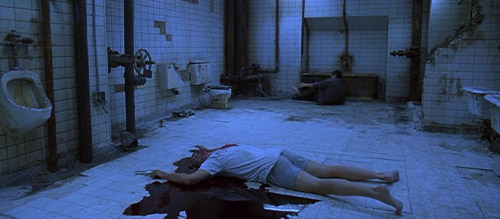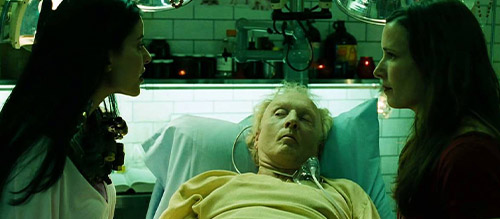Saw Movies Ranked
2. Saw (2004)
People who haven’t seen Saw seem to have an awful lot of opinions on Saw.
Danny Glover was in this one, so it has got the feel of a proper movie about it. This is a taut vigilante thriller and a solid mystery in addition to a showcase for sadistic violence. A decade-and-a-half after it made its gruesome debut on the scare stage, James Wan and Leigh Whannell’s film cuts deeper than ever despite its low-budget origins becoming more visible over time.
John Kramer’s ideology is insane, and yet there’s a seriously twisted logic behind it. “Technically he’s not a killer, he finds ways for his victims to kill himself”. He punishes what he sees as undesirables in society – the selfish, the perverted and the corrupt – by making them play his twisted games in an attempt to release themselves from ironic and deadly traps.
But Jigsaw is not a subject of judgement himself – he’s above the law by virtue of being near-death. He’s an extremist using his moral crusade as justification for his beliefs and actions, something that has only become more relevant with the rise of scapegoating, gaslighting and populist movements worldwide. In 2004 it could have been allegorical of the Bush administration and their treatment of untried suspects of terrorism. In the 2020s, you can take your pick.
A saw is a tool, and a symbol and plot device in this film, but it’s also about seeing and perspective. On multiple occasions characters only witness part of the picture or are actively obscuring key information from someone else, just as the filmmakers are controlling what we see and how we see Saw.
1. Saw III (2006)
What’s more terrifying than a vigilante on a murderous crusade? A successor who doesn’t share the same moral code.
This is probably the most “human” of the Saw films, if any of them can really claim that – at least the human cost actually registers here.
A melancholic surgeon (Bahar Soomekh) is forced to care for the dying John Kramer when her own survival is tied to his, and a grieving and vengeful father (Angus Macfadyen) is promised justice in exchange for beating Jigsaw’s games.
Tobin Bell is still one of the great charismatic villains despite being bedridden throughout the film, but it is Jigsaw’s apprentice/twisted surrogate daughter Amanda (Shawnee Smith) who becomes more frightening in an unhinged scary-funny kind of way. Without Jigsaw’s strict (if misguided) moral code, she’s more like a rabid dog than a calculated killer with purpose, and actually seems to relish the misery she puts others through on her master’s orders.
There are some particularly queasy and inventive traps, the most original of which actually doesn’t involve bodily destruction, but instead rancid pig carcasses are turned into slurry and dumped on the victim. Saw masterminds Leigh Wannell and James Wan’s tight screenplay ties up any dangling story threads and brings this initial story arc to a satisfying conclusion. Any deeper meaning of the series was pretty much lost by film three, but the well-honed performances, the utterly depraved set pieces and the unexpected amount of empathy you develop for the film’s myriad of unconventional and dysfunctional family units makes Saw III the most compelling and all-round entertaining entry in the franchise.
Recommended for you: Nightmare on Elm Street Films Ranked
Have you dared to watch all of the Saw films? Do you agree with our order? Let us know in the comments and be sure to follow The Film Magazine on Facebook and X (Twitter) for updates on more articles like this one.
Updated to include Saw X 6th October 2023. Originally published 18th October 2020.




Chris Rock in a Saw movie will stick with me forever. Not that he was bad or that performers can’t switch between genres, it’s just weird.